Andrea Liew
RADIFUSION: A multi-radiomics deep learning based breast cancer risk prediction model using sequential mammographic images with image attention and bilateral asymmetry refinement
Apr 01, 2023



Abstract:Breast cancer is a significant public health concern and early detection is critical for triaging high risk patients. Sequential screening mammograms can provide important spatiotemporal information about changes in breast tissue over time. In this study, we propose a deep learning architecture called RADIFUSION that utilizes sequential mammograms and incorporates a linear image attention mechanism, radiomic features, a new gating mechanism to combine different mammographic views, and bilateral asymmetry-based finetuning for breast cancer risk assessment. We evaluate our model on a screening dataset called Cohort of Screen-Aged Women (CSAW) dataset. Based on results obtained on the independent testing set consisting of 1,749 women, our approach achieved superior performance compared to other state-of-the-art models with area under the receiver operating characteristic curves (AUCs) of 0.905, 0.872 and 0.866 in the three respective metrics of 1-year AUC, 2-year AUC and > 2-year AUC. Our study highlights the importance of incorporating various deep learning mechanisms, such as image attention, radiomic features, gating mechanism, and bilateral asymmetry-based fine-tuning, to improve the accuracy of breast cancer risk assessment. We also demonstrate that our model's performance was enhanced by leveraging spatiotemporal information from sequential mammograms. Our findings suggest that RADIFUSION can provide clinicians with a powerful tool for breast cancer risk assessment.
CASPIANET++: A Multidimensional Channel-Spatial Asymmetric Attention Network with Noisy Student Curriculum Learning Paradigm for Brain Tumor Segmentation
Jul 08, 2021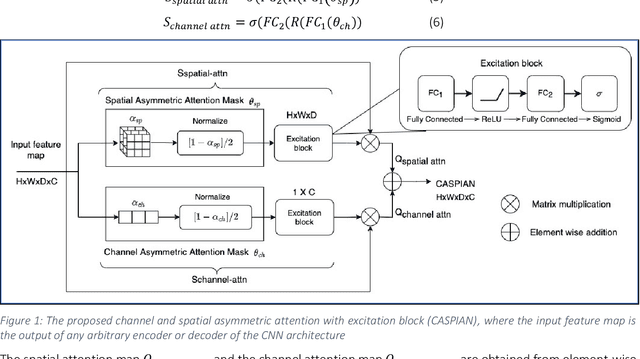
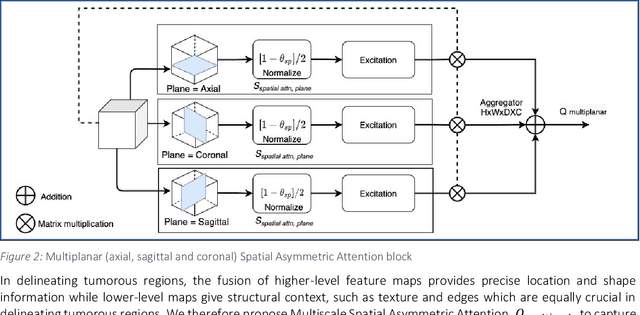
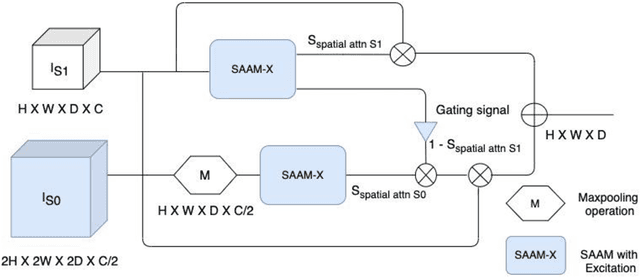
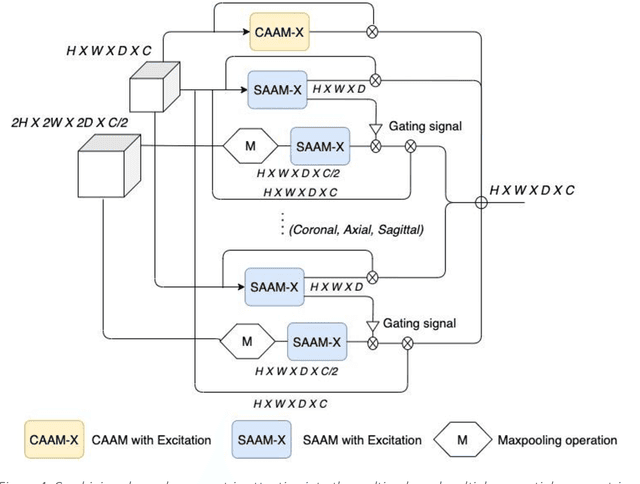
Abstract:Convolutional neural networks (CNNs) have been used quite successfully for semantic segmentation of brain tumors. However, current CNNs and attention mechanisms are stochastic in nature and neglect the morphological indicators used by radiologists to manually annotate regions of interest. In this paper, we introduce a channel and spatial wise asymmetric attention (CASPIAN) by leveraging the inherent structure of tumors to detect regions of saliency. To demonstrate the efficacy of our proposed layer, we integrate this into a well-established convolutional neural network (CNN) architecture to achieve higher Dice scores, with less GPU resources. Also, we investigate the inclusion of auxiliary multiscale and multiplanar attention branches to increase the spatial context crucial in semantic segmentation tasks. The resulting architecture is the new CASPIANET++, which achieves Dice Scores of 91.19% whole tumor, 87.6% for tumor core and 81.03% for enhancing tumor. Furthermore, driven by the scarcity of brain tumor data, we investigate the Noisy Student method for segmentation tasks. Our new Noisy Student Curriculum Learning paradigm, which infuses noise incrementally to increase the complexity of the training images exposed to the network, further boosts the enhancing tumor region to 81.53%. Additional validation performed on the BraTS2020 data shows that the Noisy Student Curriculum Learning method works well without any additional training or finetuning.
A new semi-supervised self-training method for lung cancer prediction
Dec 17, 2020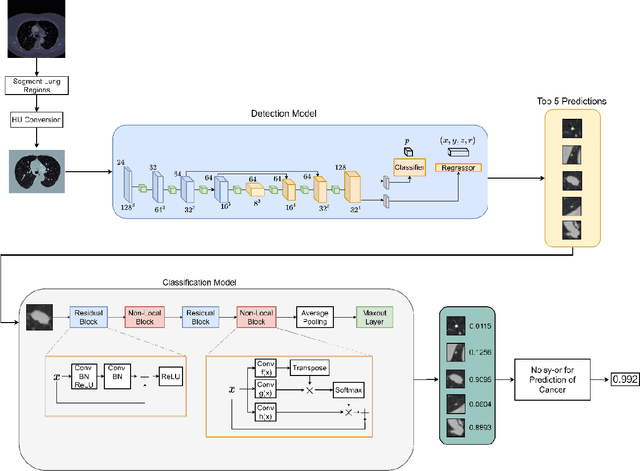


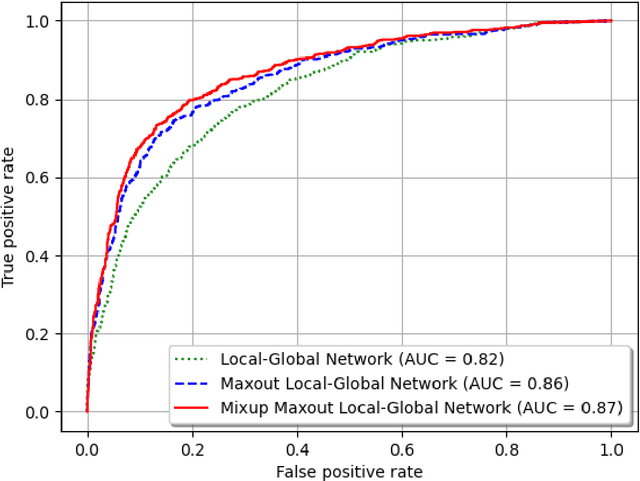
Abstract:Background and Objective: Early detection of lung cancer is crucial as it has high mortality rate with patients commonly present with the disease at stage 3 and above. There are only relatively few methods that simultaneously detect and classify nodules from computed tomography (CT) scans. Furthermore, very few studies have used semi-supervised learning for lung cancer prediction. This study presents a complete end-to-end scheme to detect and classify lung nodules using the state-of-the-art Self-training with Noisy Student method on a comprehensive CT lung screening dataset of around 4,000 CT scans. Methods: We used three datasets, namely LUNA16, LIDC and NLST, for this study. We first utilise a three-dimensional deep convolutional neural network model to detect lung nodules in the detection stage. The classification model known as Maxout Local-Global Network uses non-local networks to detect global features including shape features, residual blocks to detect local features including nodule texture, and a Maxout layer to detect nodule variations. We trained the first Self-training with Noisy Student model to predict lung cancer on the unlabelled NLST datasets. Then, we performed Mixup regularization to enhance our scheme and provide robustness to erroneous labels. Results and Conclusions: Our new Mixup Maxout Local-Global network achieves an AUC of 0.87 on 2,005 completely independent testing scans from the NLST dataset. Our new scheme significantly outperformed the next highest performing method at the 5% significance level using DeLong's test (p = 0.0001). This study presents a new complete end-to-end scheme to predict lung cancer using Self-training with Noisy Student combined with Mixup regularization. On a completely independent dataset of 2,005 scans, we achieved state-of-the-art performance even with more images as compared to other methods.
 Add to Chrome
Add to Chrome Add to Firefox
Add to Firefox Add to Edge
Add to Edge